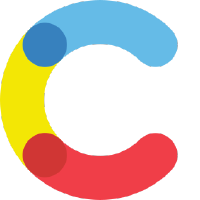

Marie Antoinette, Anne Boleyn, Ned Stark — ask any of them, and they would be against chopping off heads.
But ask a development team, and they might be in favor of chopping the head off a traditional content management system (CMS) as it opens up potentially endless possibilities for content management and delivery.
The “head” of a traditional content management system (CMS) refers to its front-end components, such as the front-end framework and templating system. These tools deliver and display the content on the desired platform. So, just as chopping off Ned Stark’s head opened up a possibility of storylines on “Game of Thrones,” chopping of the head of a CMS opens up the possibilities for content delivery.
| Tip: Read more on what is a CMS to help you better understand a complex topic. |
A headless CMS removes those front-end components. This leaves raw and unpublished content at a development team’s disposal. Since they are not tied down by one default front-end system to deliver that content, developers can build as many heads as they’d like to display content. With a little magic from an API, this content is delivered to a variety of platforms, from websites, to apps, to smart watches and more. A traditional CMS already has a front-end delivery layer built in. That means content is only displayed onto one platform.
The main difference between the two CMS types are in the architecture type. A decouple CMS has an active architecture that present content on a page when it is published. A headless CMS has a reactive architecture, meaning the content only populates on a page when it is queried by a user.
The characteristics that define a headless CMS include:
An API is what separates a headless CMS from a traditional CMS. APIs can integrate with various languages and frameworks. Various frontend delivery systems can be built onto APIs, which is how these tools can deliver content onto any platform.
| RELATED: Check out the best free APIs according to developers. |
A CMS is limited to pre-defined content models, which is the way your content is structured. A headless CMS is not — you have the flexibility to create your own platform on which to deliver your content.
Asset management allows your files to be saved in the cloud, and then managed through one system. Content saved locally and in the cloud can still be managed through the same platform. A headless CMS should give you the ability to create, read, update and delete your own content.
One of the biggest advantages of a headless CMS is that you can publish across multiple platforms. Sometimes that means the content on different platforms has to be displayed in different languages. As a content from a headless CMS can be delivered onto any frontend framework, it can be published in any language needed, with a little help from an API.
I’ve already discussed the biggest benefit of a headless CMS — the fact that developers can build multiple heads to which content is delivered. It’s the main component that sets this type of content management solution apart from a traditional CMS. But that’s not the only feature that makes this software worth looking into.
With a traditional CMS, you would need to reimplement the tool each time you wanted to upload content to a different platform. As a headless CMS does not include a frontend delivery system, there is no need to reimplement.
A traditional CMS is built upon a website and there is a lot of code and content required to make that happen. You only need a little code to get a headless CMS up and running, which makes it far easier to use than a traditional CMS. According to Forbes, “It’s also a lot quicker for business teams to create new functionality. For example, if a marketing department wishes to create a new series of product mini-sites, it can go straight into the CMS and start creating the content immediately.”
As previously mentioned, a beneficial feature of a headless CMS is the fact that it allows you to streamline various tasks. One of which is the fact that content creators and developers can work in tandem with a headless CMS. With this ability, you can get your content up and running quicker than you could with a traditional CMS, since a traditional CMS requires the system to be fully developed before content is created.
Omnichannel marketing is disrupting all forms of retail.With content in a headless CMS being reactive, this allows for content to be repurposes across many channels including social, mobile, VR, and anywhere your customers or users are at.
The headless CMS space is still developing, which means some big names are yet to reveal themselves. Here are a few products that are considered the best headless CMS platforms in a space starting to make waves on G2 Crowd.

Contentstack is a headless CMS that accelerates and simplifies content management across multiple digital channels, such as web, mobile and IoT. Features include workflows and approvals, digital asset management, multi-language deployment and more.
One Contentstack review said, “There are many benefits of having a headless CMS that just outputs JSON and associated assets. Solved our need to serve static content but retain the ability for content creators to make edits without engineering assistance.”
Contentstack offers three different plans, the first of which is a free trial that allows you to evaluate all features Contentstack provides. The second option is the Business plan, which is ideal for businesses that may be planning to scale. It is offered at $3,500/month. The final is the Enterprise plan, offered at a customized price. Contact Contenstack for further details.

Contentful is a web content management system with headless CMS capabilities. This tool allows editors to manage, and developers to deliver, content into mobile or web applications. Contentful prides itself on boosting developer productivity and allowing innovation on new platforms by making the content you create programmable.
One Contentful review said, “Contentful is super flexible from a development aspect. It is also super simple from the standard content user. The roles and users features are really powerful. We’ve been able to only show the relevant content types to the relevant users which has streamlined a lot of our previous web processes.”
Contentful offers four different pricing plans. The Developer plan is completely free of charge. It is meant for use cases such as hackathons and various side projects. The Team plan is offered at $249/month. This option is for commercial projects run by smaller teams.
The Professional plan is meant for sites and apps run by mixed teams or serving international markets. It is offered for $949/month. The final option is an Enterprise plan geared toward big brands, which is offered at a custom price. Every paid plan starts with a 14-day free trial, which helps businesses of any size or individual users confirm whether Contentful is the right choice.

As another web content management software with headless CMS capabilities, Craft CMS focuses on providing developers, web professionals and designers with a tool that combines flexibility, power and usability.
One Craft CMS review praises this tool’s flexibility. The reviewer said, “Craft is built for developers and content admins alike. It’s flexible, intuitive and easy to use. It’s also powerful and impressive in what in can do. As someone who has used many a CMS over the years, it’s obvious to me that Craft is the product of well-thought out design and development.”
You can choose between three different Craft CMS options. The Personal plan, which is completely free of cost, is geared toward developers. The Client plan is for sites geared toward those with just one content manager. It is offered at $199 per site. The Pro plan is for any other need not met by the Personal or Client plans. It can be purchased at $299 per site.
Headless CMS is just one of the innovations for the overall CMS space in 2019. But what else will disrupt the industry in 2019?
Learn more about content management trends including remote workers and AI-generated content.
Brynne is the Buyer Inquiry Team Lead at G2 Crowd. In addition to writing, she leads the research specialists in providing personalized software and services recommendations to buyers. She wishes she had interesting hobbies to include in this bio.
Many of today’s top e-commerce retailers are thinking, “Off with your head!”
 by Christina Marfice
by Christina Marfice
Wrapping up their ninth year hosting the annual conference in Cleveland, the team at Content...
 by Lauren Pope
by Lauren Pope
It’s a well-known fact of human development that adults struggle to learn new languages as...
 by Branko Kral
by Branko Kral
Many of today’s top e-commerce retailers are thinking, “Off with your head!”
 by Christina Marfice
by Christina Marfice
Wrapping up their ninth year hosting the annual conference in Cleveland, the team at Content...
 by Lauren Pope
by Lauren Pope
Never miss a post.
Subscribe to keep your fingers on the tech pulse.



